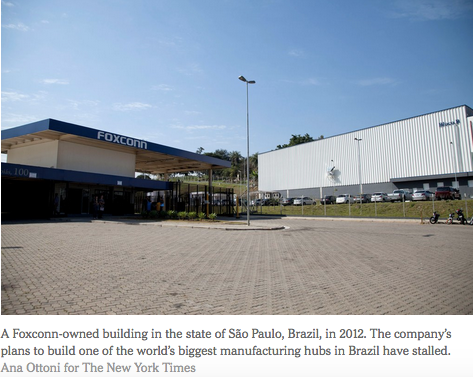Before the Taiwanese manufacturing giant Foxconn pledged to spend $10 billion and create 13,000 jobs in Wisconsin, the company made a similar promise in Brazil.
At a news conference in Brazil, Foxconn officials unveiled plans to invest billions of dollars and build one of the world’s biggest manufacturing hubs in the state of São Paulo. The government had high expectations that the project would yield 100,000 jobs.
Six years later, Brazil is still waiting for most of those jobs to materialize.
. . .
“The closer they get to big markets like the U.S. or Brazil, the less they have to worry about import taxes or other barriers,” said Gary Gereffi, director of the Center on Globalization, Governance, & Competitiveness at Duke University. “Getting outside of China to supply these markets is like jumping over any potential tariff wall.”
But exporting Foxconn’s Chinese strategy is virtually impossible.
The global supply chain for electronics remains firmly rooted in Asia, where advantages like low-cost labor and an abundance of skilled engineers have been crucial to the region’s development as a manufacturing base.
What makes Foxconn’s Chinese operations really hum are the extraordinary level of government subsidies and support, and the sheer scale of those operations. Local governments often finance and build the company’s factories, manage its dormitories and recruit tens of thousands of workers. Some government officials have gone door to door in small counties to recruit workers.
The government aid can reach into the billions of dollars.




